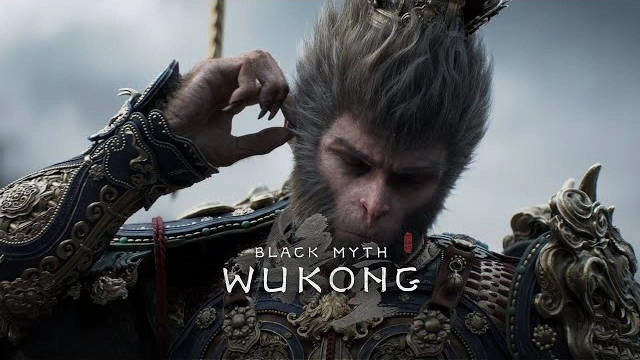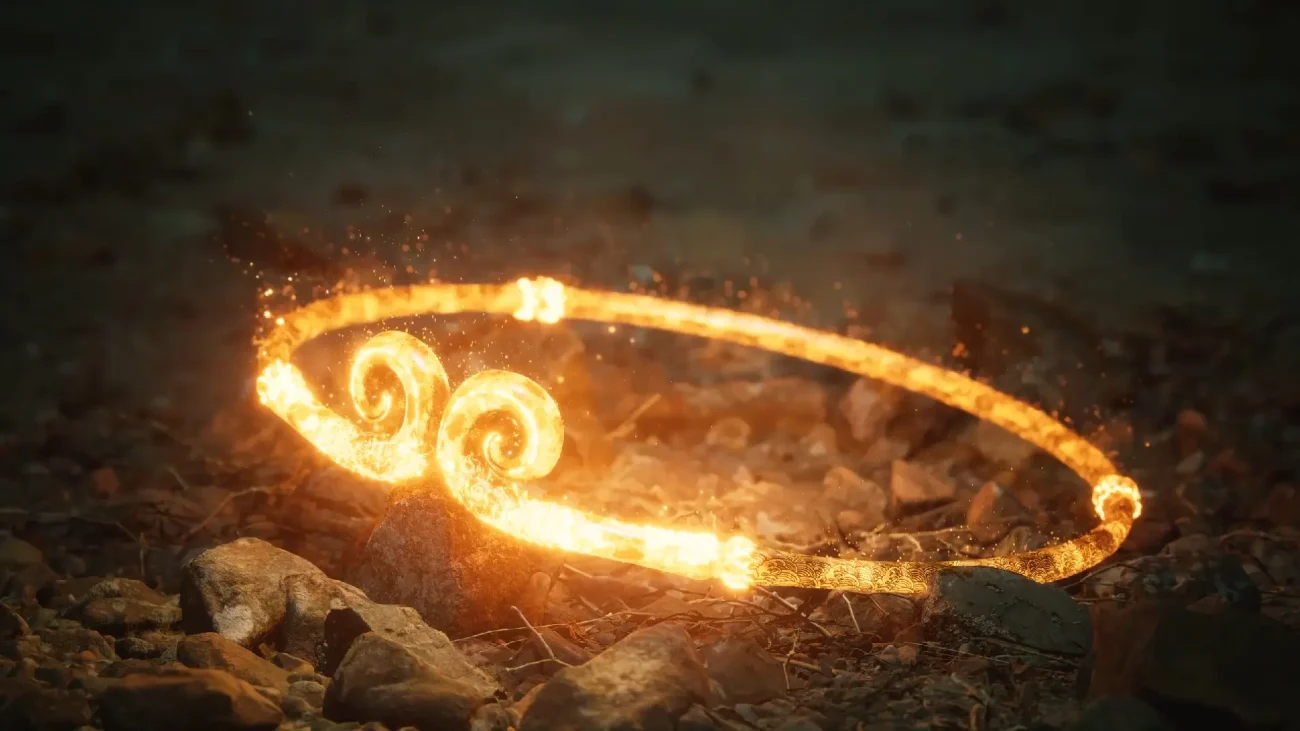Deepen your understanding of the game's plot
In Black Myth: Wukong, players are transported into a world rich with mythological landscapes and legendary creatures drawn from the timeless Chinese classic, Journey to the West. This article delves into some of the key locations featured in the game, offering not only a glimpse into their striking visuals but also a deeper understanding of their cultural and historical significance. From the serene yet powerful Mount Huaguo to the fiery challenges of Flaming Mountain, these environments play a crucial role in shaping the story and immersing players in a world where myth and reality intertwine.

n Mount Huaguo
The Legendary Mount Huaguo: Abode of the Monkey King
In the classic Chinese novel "Journey to the West" by Wu Cheng'en in the Ming Dynasty, Mount Huaguo (Flower Fruit Mountain), an iconic and captivating location, is not only the place where the legendary Monkey King, Sun Wukong, hails from and begins his remarkable journey but also presented as an idyllic realm in the Eastern Continent on the back of the Divine Turtle, known as the Ao Lai Country. Renowned for its captivating natural splendor with lush forests, exotic vegetation, and an abundance of fruit-bearing trees (hence its name), it is a place where celestial and earthly elements merge, becoming a sanctuary for immortals and mythical beings alike.
The Birth, Residence, and Kingdom on Mount Huaguo
Mount Huaguo holds legendary status mainly because it is the birthplace of Sun Wukong. In the novel, an extraordinary rock on Mount Huaguo, nourished by the essence of Heaven and Earth, gave birth to the Monkey King. This stone egg, after years of absorbing natural energy, cracked open to reveal a stone monkey who would later become Sun Wukong. From this miraculous birth, the mountain became a central part of divine and mythical tales.
One of the most remarkable features of Mount Huaguo is the Water Curtain Cave. Hidden behind a majestic waterfall, this cave serves as Sun Wukong's royal residence and headquarters. Described as an impregnable fortress, it offers both stunning beauty and strategic advantage. It is within this cave that Sun Wukong gathers his loyal subjects and proclaims himself the Handsome Monkey King.
Moreover, Mount Huaguo is not just a solitary abode for Sun Wukong but also a flourishing kingdom of monkeys. The mountain is inhabited by numerous monkey tribes who hold Sun Wukong in high regard as their king. These monkeys live in harmony with the natural environment, relishing the abundant resources the mountain offers. Under Sun Wukong's leadership, prosperity and order prevail in this simian society, making Mount Huaguo a utopian retreat.
n Black Wind Mountain
Black Wind Mountain is a picturesque peak that has been praised for its stunning scenery by both Wukong and Guanyin. The storyline involving Black Wind Mountain centers around Tang Sanzang's precious kasaya.
Guanyin Temple is located to the north of Black Wind Mountain. It is a bustling Buddhist temple with a high volume of worshippers. The abbot of the temple is Elder Jinchi, and monks Guangzhi and Guangmou also reside there. Whenever Tang Sanzang passes by a Buddhist temple, he makes it a point to offer his prayers. When he reached Guanyin Temple, it was already late, so he decided to stay overnight. This led to the subsequent events of the kasaya being stolen and the temple being set on fire.
Black Wind Cave lies 20 li (approximately 6.2 miles) south of Guanyin Temple and serves as the residence of the Black Wind King. The entrance to Black Wind Cave is ingeniously designed with mechanisms so intricate that even Wukong couldn't crack them. Once the Black Wind King retreated into the cave, Wukong found himself unable to do anything about it.
n Yellow Wind Ridge
In the 20th chapter of "Journey to the West," Yellow Wind Ridge stands as a dangerous place where Tang Sanzang and his disciples face peril. The main location here is the Yellow Wind Cave, which serves as the lair of the Yellow Wind Guai. The original text portrays Yellow Wind Ridge as having sheer cliffs and peculiar winds that frequently sweep through the mountains.
In the original "Journey to the West," the Flowing Sands Kingdom is only briefly mentioned, particularly in the chapter related to the New Thunderclap Temple. When Sun Wukong goes to seek assistance from the three armies of deities, the Grandmaster of the Great Sage dispatches his disciple, Little Prince Zhang, who presents himself as the prince of the Flowing Sands Kingdom. Some interpretations attempt to connect the Flowing Sands River, where Sha Wujing (Sandy) dwells, with the Flowing Sands Kingdom. However, these connections are solely based on name similarity and lack solid evidence. Regarding the plot in "Black Myth: Wukong," where the Flowing Sands Kingdom expels Buddhists and worships rats as deities, there is a comparable storyline in the original text. The Immortal of Tiger Power, the Immortal of Elk Power, and the Immortal of Antelope Power are three demons who disguise themselves as Taoist magicians to deceive the ruler of the Kingdom of Chechi. They expel Buddhists and compel the people to follow Taoism.
n The New West
In "Journey to the West", the Lesser Western Paradise is the territory of the Yellow-Browed Demon. Here is the relevant introduction:
Location and environment: The Lesser Western Paradise is located on the journey of Tang Sanzang and his disciples to the Western Paradise to fetch scriptures. The book describes that there are towers, halls and pavilions here, with a serene Buddhist aura. It looks like a real fairyland and a good place for religious practice, but there is also an inexplicable ominous air. In fact, this is a trap set by the Yellow-Browed Demon. He uses a fake Thunderclap Monastery to deceive Tang Sanzang and his disciples. The Yellow-Browed Demon was originally the boy who played the chime stone for the Laughing Buddha from the East. While the Buddha was away, he stole two treasures, the golden cymbal and the human-seed bag, and descended to the mortal world to become a demon. He named the place where he was as the Lesser Western Paradise and pretended to be the Yellow-Browed Old Buddha, creating chaos here.
Plot development: When Tang Sanzang and his disciples arrive at the Lesser Western Paradise and see the words "Thunderclap Monastery", Tang Sanzang thinks that they have reached the Spirit Mountain and insists on entering the monastery to pay respects. Although Sun Wukong tries his best to dissuade him, it is in vain. After entering the monastery, Tang Sanzang bows and kowtows to the false Buddha. After the Yellow-Browed Demon reveals his true form, he traps Sun Wukong with the golden cymbal. Then he uses the human-seed bag several times to capture Sun Wukong and the heavenly soldiers and generals. After Sun Wukong escapes by all means, he successively invites the Twenty-Eight Constellations, the True Martial Emperor of the North who Subdues Demons, and the National Master Wang Bodhisattva to come and help, but none of them can subdue the Yellow-Browed Demon. Finally, Maitreya Buddha comes in person and turns into an old melon grower. The Yellow-Browed Demon eats the watermelon that Sun Wukong has transformed into. The demon is in great pain and begs for mercy repeatedly. Only then does Maitreya Buddha subdue the Yellow-Browed Old Buddha and take back the human-seed bag and other treasures. Tang Sanzang and his disciples can continue their journey to the West.
The webbed hollow (Pansi Ridge), also known as the Silk-Spinning Mountain, is a significant location in Chinese mythology, first appearing in the 16th-century classic novel "Journey to the West." In the story, it's a mountain encountered by the monk Xuanzang and his disciples, including the famous Monkey King, Sun Wukong, on their journey to India. The mountain is renowned for its intricate spider webs, woven by seven powerful spider spirits who can transform into beautiful women to lure travelers.
In literary analysis, the webbed hollow often symbolizes temptation and desire, serving as a test for spiritual practitioners. Its story has had a lasting impact on Chinese culture, being adapted into various modern art forms including movies, TV series, and operas. In contemporary works like the game "Black Myth: Wukong," The webbed hollow might be reimagined as a challenging area filled with puzzles, powerful enemies, and intricate level design, while maintaining its mystical and dangerous atmosphere from the original mythology.
n Flaming Mountain
The Flaming Mountain, a legendary and captivating place in Chinese mythology. Located in a remote area, the Flaming Mountain is known for its intense heat and fiery appearance. The mountain seems to be constantly ablaze, with flames leaping and dancing, creating a spectacular sight. According to the famous Chinese novel "Journey to the West", the Flaming Mountain is an obstacle that the monk Tang Sanzang and his disciples must overcome on their journey to fetch sacred scriptures.
The heat of the Flaming Mountain is so intense that it is almost impossible to cross without special means. The landscape is harsh and desolate, with little vegetation able to survive in such extreme conditions. However, there are also tales of hidden treasures and magical powers associated with this place.
The Flaming Mountain has become an iconic symbol of adventure and perseverance. It represents the challenges that one must face in the pursuit of a noble goal. Its unique appearance and the stories surrounding it have fascinated people for generations, and it continues to capture the imagination of those who hear about it.
